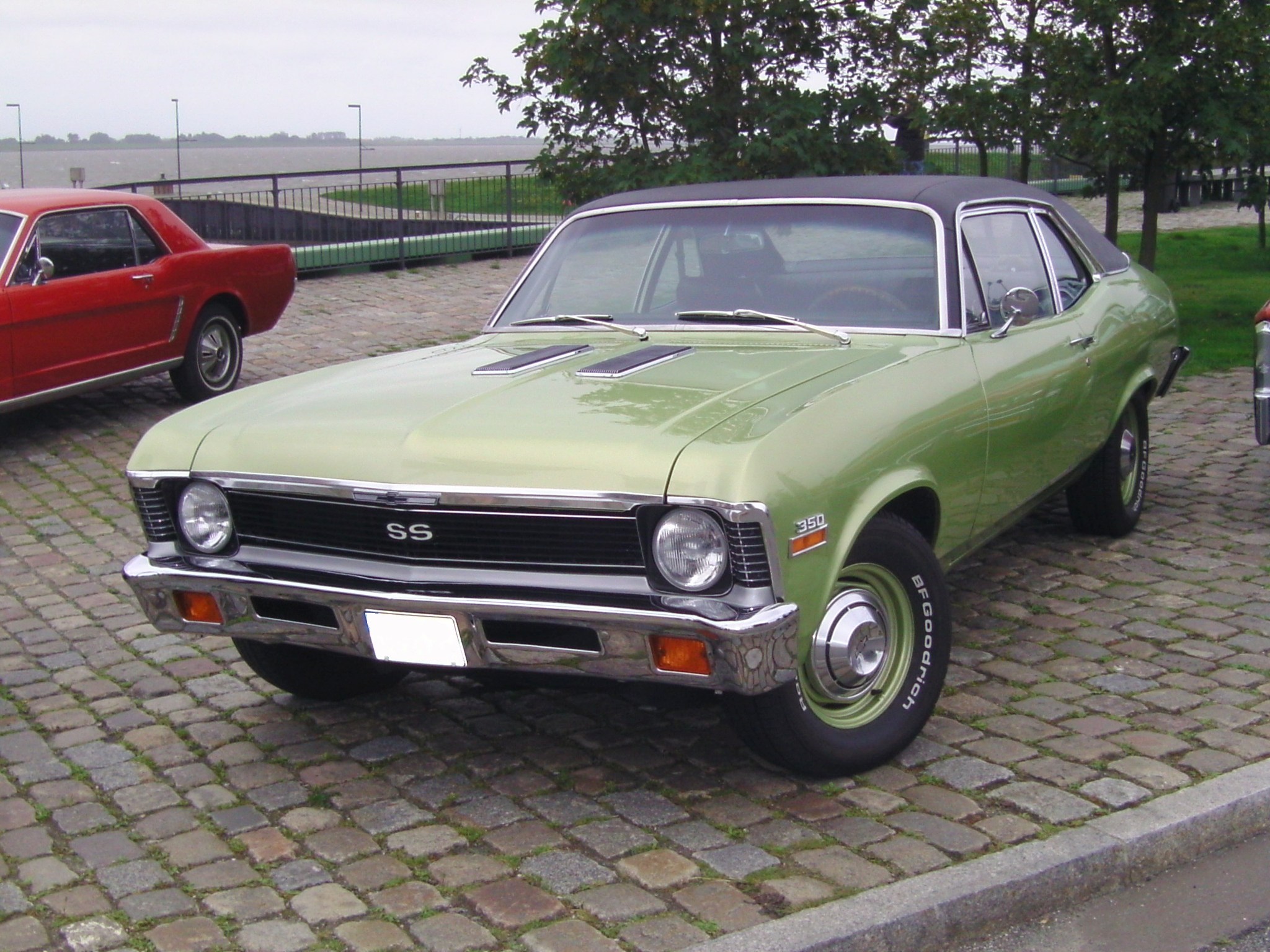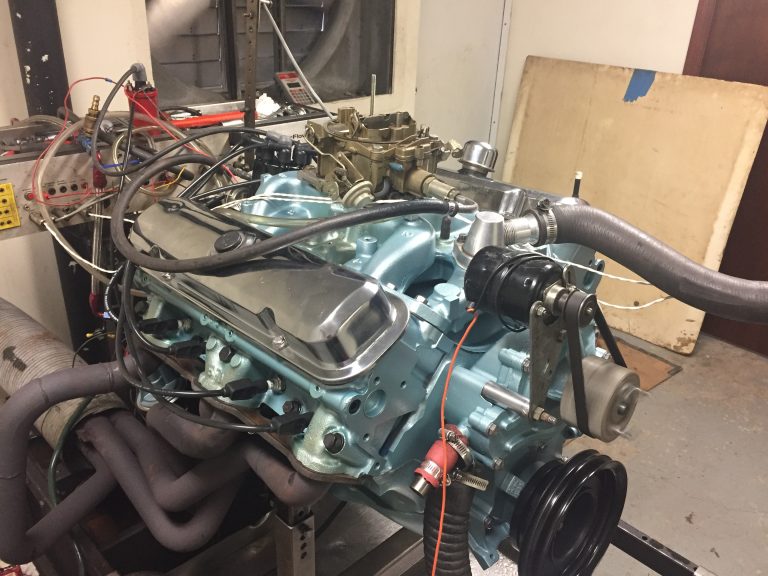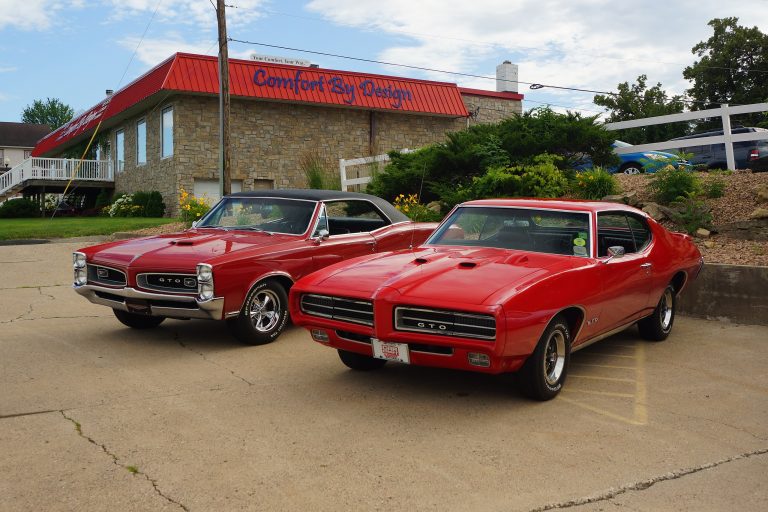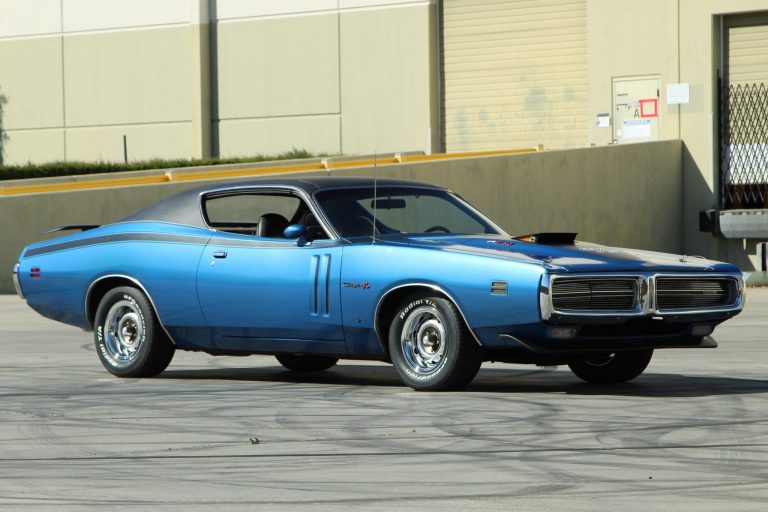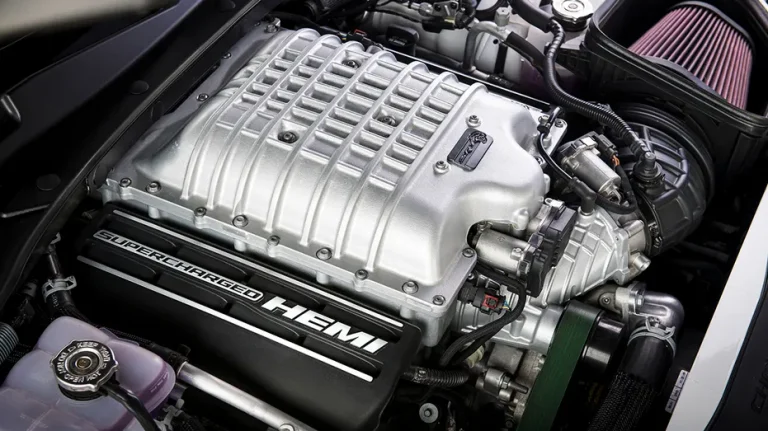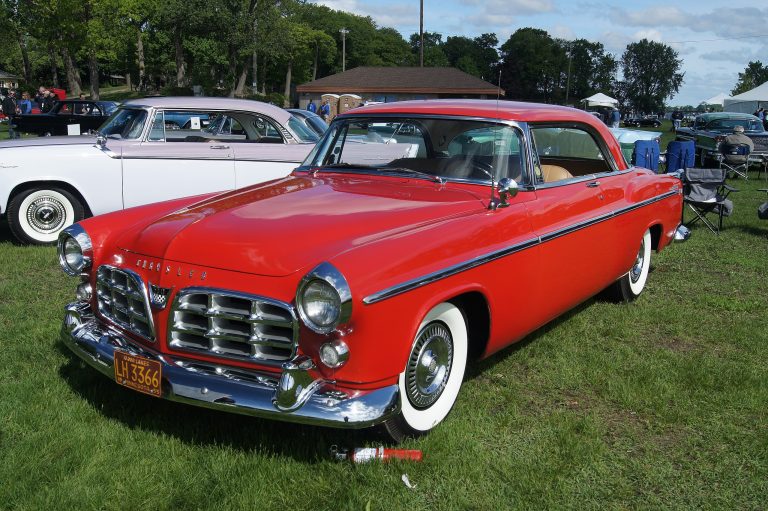Chevrolet Nova SS

Meet Chandler
Chandler has a bachelors and masters degree in history as well as a passion for classics and muscle cars. His education and historical knowledge makes him skilled at crafting highly detailed articles about America’s muscle cars and automotive history. His love of muscle cars is undeniable, with him seeking them out at every opportunity during his visits to auto shows and car meets. Chandler’s knowledge and enthusiasm towards automotive history make him a great asset to the Muscle Car Club community.
For many years, the Chevrolet Nova SS was the perfect budget muscle car. It featured plenty of options, a classic muscle car body, and big-block engines up to 396 cubic inches of displacement and 375 horsepower. The SS was the top tier of the Chevrolet Nova, and it lasted from 1963–1972 as a stand alone model, before being downgraded to an option package. Its first few years were not anything special, but in 1965 the Nova became a true muscle car, a distinction that more or less lasted through the 1970s. Read on to learn the history behind one of the most iconic muscle cars of all time: the 1962–1988 Chevrolet Nova and Nova SS.
Chevrolet Nova Overview
All told, the Chevy Nova lasted for five generations and 22 model years. The original lasted from 1962–1965, and saw the introduction of the Super Sport (SS) model in 1963. At first, General Motors sold the car as the Chevrolet Chevy II Nova. It sat on the General Motors’ 110 inch X-body platform. The second generation Nova lasted from 1966–1967, and saw the Nova get a styling refresh and facelift. Engines ranged from a 90 horsepower inline-four to the L-79 code, 350 horsepower “TurboFire” 327 V8.
In 1968, Chevrolet dropped the II designation, and started calling the car simply the Nova. The third generation lasted from 1968–1974, and was when the Nova SS reached its performance peak. The most powerful version was the Nova 396 SS. It used a big-block 396 V8 engine, which made a maximum of 375 horsepower. From 1973-on, Chevy eliminated the SS model, making it only a visual package until 1975, when they dropped it completely.
Unfortunately, due to emissions restrictions, the Nova became much less powerful as the ‘70s rolled on. By the end of the decade, it maxed out at 185 horsepower – even with a 350 V8. After being retired for five years, Chevy brought it back for 1985–1988 as an economy car and sales were decent. However, Chevrolet still gave it the ax after four model years, ending the Nova forever.
1962–1967 Chevrolet Chevy II Nova & Nova SS
The first two generations of the Chevrolet Chevy II Nova span six model years from 1962–1967. The original Nova lasted from 1962–1965. It rode on the 110 inch GM X-platform along with a few of their Canadian market “Acadian” brand models. At first, GM marketed the car as the Chevy II, and there were four planned trims: The 100, 200, 300, and 400 Nova Series. The 200 Series quickly flamed out and the 300 Series only lasted through 1963. Only the 100 and 400 Nova Series continued.
For the 1962 Chevrolet II Nova, GM offered five body styles: A four-door sedan or station wagon, or a two-door coupe, sedan, or convertible. Beginning in 1963, the Nova SS became a $161 option, and in 1964 the Super Sport became its own top-of-the-line model. For the first two years, Chevrolet only offered four and six-cylinder engines, and the car could hardly be considered a muscle car.
However, in 1964 it got the 283 V8, and in 1965 GM upgraded it with the 300 horsepower L-74 Code 327 V8. By 1966, the 327 was outputting 350 horsepower, and the Nova SS was one of the best deals in the muscle car world. It was cheaper than the Chevrolet Camaro SS and Chevrolet Impala SS by a few hundred, and was more than a grand less than the legendary Chevrolet Corvette Stingray 396.
1962 Chevy II Nova
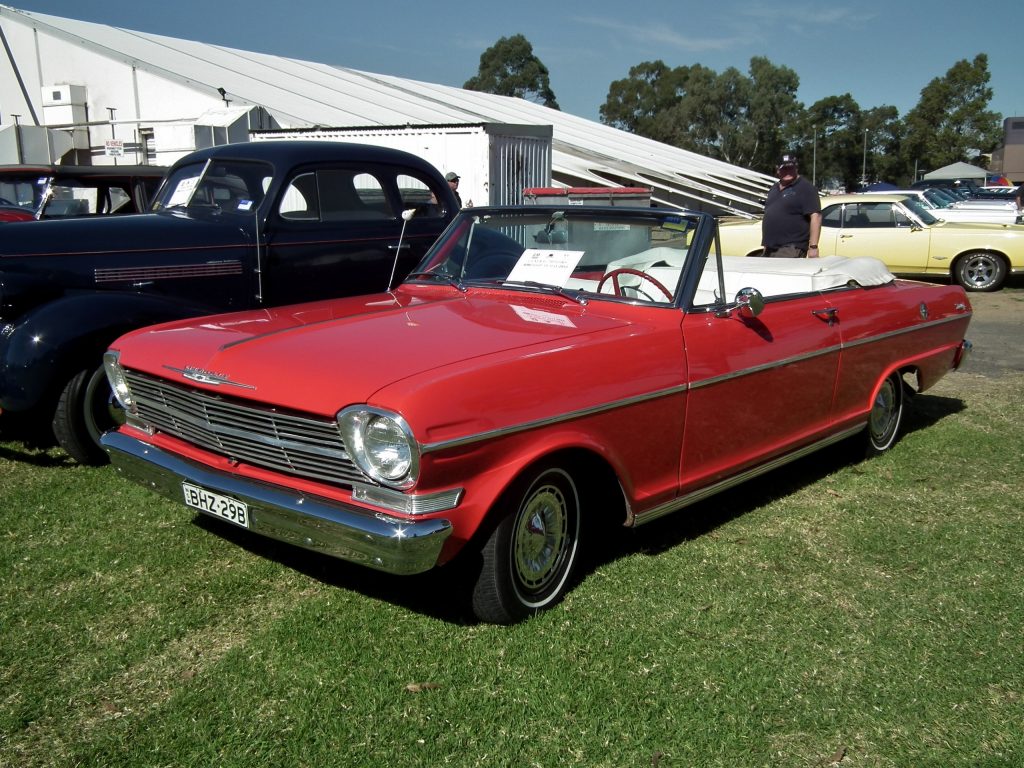
For the inaugural year 1962 Chevy II Nova, there was no SS package offered. Available body styles were a four-door sedan or station wagon, or a two-door coupe, sedan, or convertible. GM planned to release four versions of the car, the 100, 200, and 300 Series, as well as the 400 Nova Series, but they dropped the 200 Series shortly after production started. The 100 was the lowest priced option and the 400 Nova was the highest, and basically had everything upgraded. Only two engines were available, a 90 horsepower 153 cid I4 or a 120 horsepower 194 cid I6.
1963 Chevy II Nova SS
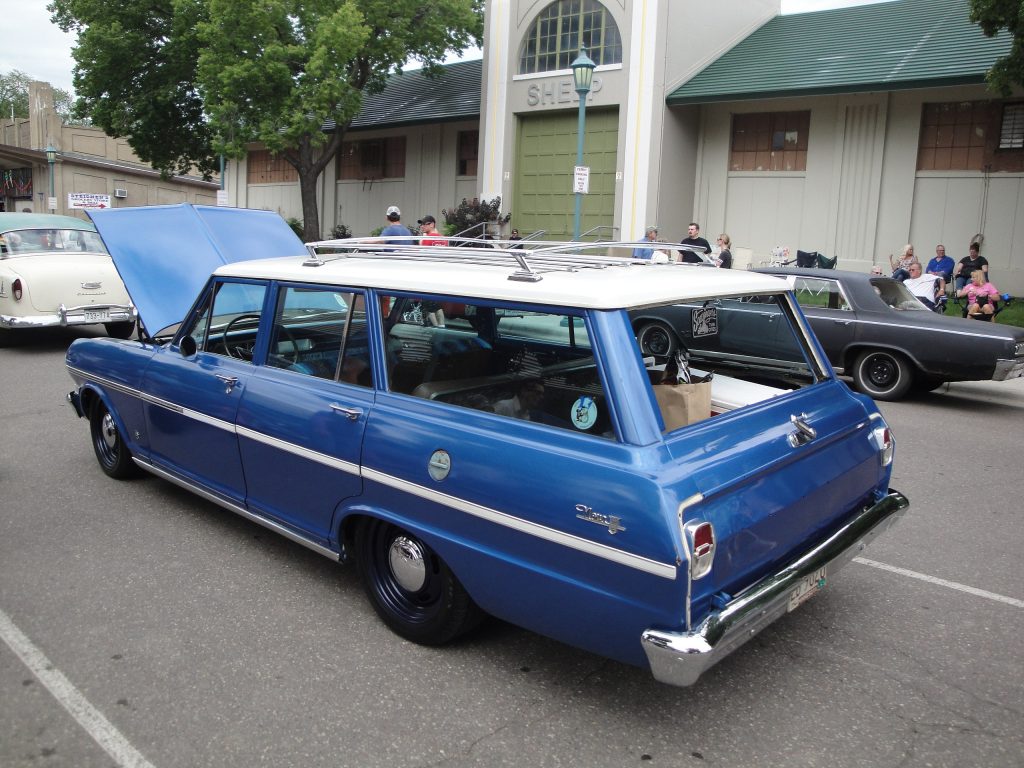
For the 1963 Nova, Chevrolet offered the SS option for the first time. It was available with either the four or six-cylinder engines. The SS package added finned wheel covers, aluminized rear panels, and SS badges on the rear fenders and deck lid. This was also the last year for the convertible body style.
1964 Chevy II Nova SS
In 1964 was the first time Chevy made the SS its own standalone model instead of an option package like the year prior. They also made two new engines available, a 230 cid I6 and a new 283 “TurboFire” V8. The V8 made either 195/220 horsepower with either a two or four-barrel carburetor. It was the first V8 available in the Nova. The convertible body style was dropped for this year.
1965 Chevy II Nova SS
It was in 1965 that the Chevy II Nova SS truly became a muscle car. In addition to the 283 V8, a new and bigger 327 “TurboFire” V8 became an option. These were the L-30 code (250 horsepower) and L-74 code (300 horsepower) versions. Both of them used Carter four-barrel carburetors with 10.5:1 compression and hydraulic roller lifters.
For 1965, the SS model had SS nameplates and emblems on the rear fenders and deck lid, SS wheel covers and 14 inch wheels and tires, bucket seats, floor-mounted shifter with the four-speed manual and PowerGlide transmissions, SS glove compartment door name plates, and even an electric clock. At just $2,381, the SS was barely $160 more than the standard Nova two-door hardtop, and was quite the bargain.
1966 Chevy II Nova SS
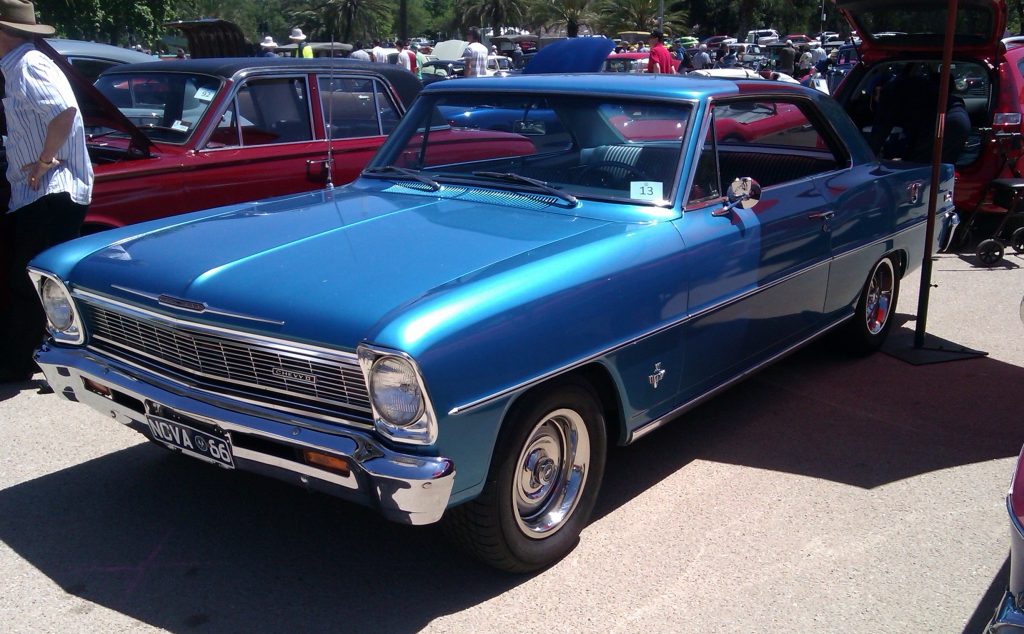
For the first year of the second generation, the big news for the 1966 Nova SS was the replacement of the L-74 with the new L-79 code 327 V8. As well as the swapping in of the new L-30 code 327. The L-30 now made 275 horsepower through a new quad-barrel Rochester “QuadraJet” carburetor. Compared with the outgoing L-74, the new L-79 had 11.0:1 compression, hydraulic roller lifters, and a quad-barrel Holley carburetor. It also made a nice 350 horsepower to top it all off.
1967 ChevyII Nova SS
For the final year of the second generation Chevy II, they dropped the L-79 code 327, and the L-30 was now the highest performance option, even in the SS. For 1967, the Nova SS model included a black-accented grille with the Nova SS emblem, body side striping, special lower body and wheelhouse moldings, SS wheel covers, SS fender scripts, all-vinyl interior, Strato-bucket seats, a floor-mounted shifter, and three-spoke steering wheel.
1962–1967 Chevrolet Nova Engines
| Model Year | Engine | Horsepower | Torque |
| 1962-1967 | 153 I4 (1bbl) | 90 horsepower | 152 lb-ft |
| 1962-1967 | 194 I6 (1bbl) | 120 horsepower | 177 lb-ft |
| 1964 | 230 I6 (1bbl) | 155 horsepower | 215 lb-ft |
| 1964-1967 | 283 V8 (2bbl) | 195 horsepower | 285 lb-ft |
| 1964-1966 | 283 V8 (4bbl) | 220 horsepower | 295 lb-ft |
| 1965-1966 | 230 I6 (1bbl) | 140 horsepower | 220 lb-ft |
| 1965 | 327 V8 (4bbl) | 250 horsepower | 350 lb-ft |
| 1965 | 327 V8 (4bbl) | 300 horsepower | 360 lb-ft |
| 1966-1967 | 327 V8 (4bbl) | 275 horsepower | 355 lb-ft |
| 1966 | 327 V8 (4bbl) | 350 horsepower | 360 lb-ft |
| 1967 | 250 I6 (1bbl) | 155 horsepower | 235 lb-ft |
1962–1967 Chevrolet Nova Production Numbers
| Model Year | Body Style | Production Total |
| 1962 | Four-Door Sedan | 139,004 |
| Four-Door Station Wagon | 59,886 | |
| Two-Door Coupe | 59,586 | |
| Two-Door Sedan | 44,390 | |
| Two-Door Convertible | 23,741 | |
| 1962 Total | 326,607 | |
| 1963 | 100 Series | 50,400 |
| 300 Series | 78,800 | |
| Nova 400 Series | 171,100 | |
| Station Wagons | 75,300 | |
| 1963 Total | 375,600 | |
| 1964 | Four-Door Sedan | 84,846 |
| Four-Door Station Wagon | 35,670 | |
| Two-Door Coupe | 30,827 | |
| Two-Door Sedan | 84,846 | |
| 1964 Total | 236,189 | |
| 1965 | Chevy II 100 | 40,500 |
| Chevy II Nova | 51,700 | |
| 1965 Total | 92,200 | |
| 1966 | 100 Series | 47,600 |
| Nova Series | 73,900 | |
| Nova SS Series | 21,000 | |
| 1966 Total | 142,500 | |
| 1967 | 100 Series | 36,380 |
| Nova Series | 47,600 | |
| Nova SS Series | 10,100 | |
| 1967 Total | 94,080 |
1968–1974 Chevrolet Nova & Nova SS
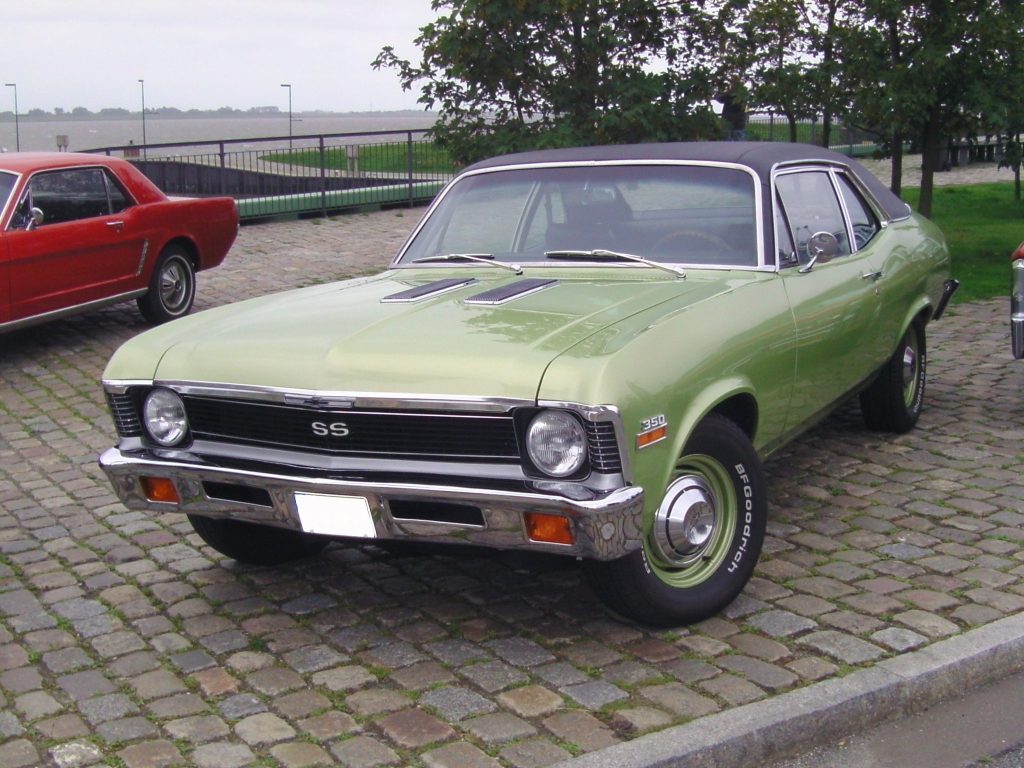
The third generation of the Nova continued from 1968–1974, and starting in 1968, Chevrolet dropped the Chevy II moniker and began calling it simply the Nova. That year, Chevrolet also heavily redesigned the X-platform, giving it a 1 inch longer (111”) wheelbase and smoothing out some of the more boxy lines from before.
However, the biggest upgrade was in the Nova Super Sport department, which was now just an option package again. New engines for the SS were the 350 V8 and 396 V8, which maxed out at 300/375 horsepower, each. Overall sales for the third generation Nova SS were very strong. The 1974 model year marked the strongest year for sales ever with nearly 400,000 units sold.
1968 Chevrolet Nova SS
In addition to the new 111 inch wheelbase, the 1968 car dropped the Chevy II designation, and was simply the Chevrolet Nova. The SS model still returned, and was more powerful and better than ever. Unlike before, now the SS was only available with high-output V8 engines, and nothing smaller than 350 cubic inches made the cut.
The 350 Nova SS used the L-48 code 350 V8, which made 295 horsepower and 380 lb-ft of torque. It had a hydraulic cam, quad-barrel “QuadraJet” carb, cast pistons, four-bolt mains, and a 10.25:1 compression ratio. The larger L-78 code big-block 396 V8 made a maximum of 375 horsepower and 415 lb-ft of torque through an 11.0:1 compression ratio, Holley quad-barrel 800-cfm carb, forged pistons, aluminum high-rise intake manifold, solid lifter camshaft from the L-72, four-bolt mains, and a steel crankshaft. It was the same engine as found in the Chevrolet Corvette, but detuned.
1969 Chevrolet Nova SS
For the 1969 Chevrolet Nova SS, the only real changes from the factory was a 5 horsepower bump in the L-48 350 V8 to an even 300 horsepower. However, the real headline for ‘69 was the Yenko Nova 427. Made by the famous Don Yenko Chevrolet in Pennsylvania, these were Nova SS’ that had the 396 replaced with the larger Chevy L-72 code 427 V8.
The Yenko Nova 427s were rated at 425 horsepower and 460 lb-ft of torque from the dealership, but they really made closer to 450 horsepower on the street. Available transmissions were either a close-ratio Muncie four speed with Hurst linkage or a Turbo Hydra-matic with Hurst Dual-Gate shifter, mated to a heavy-duty 4.10:1 Posi-axle. Yenko only produced 37 of the Yenko Novas, making them extremely rare. And, since the Novas weighed so little, it may have been the fastest Yenko production car ever built.
1970 Chevrolet Nova SS
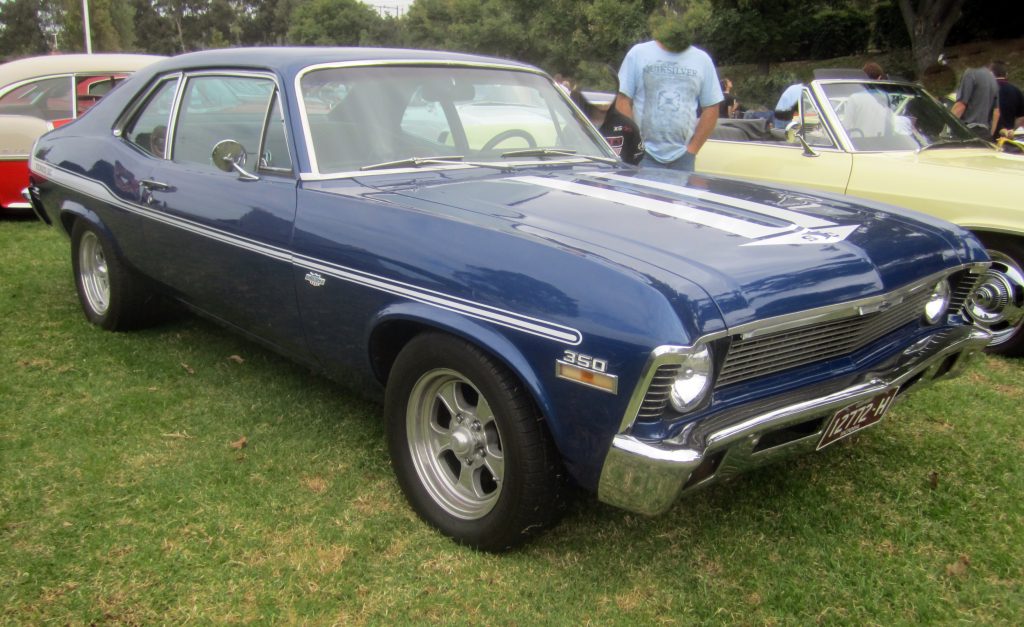
In 1970, the most significant change for the production SS Nova was the slight boring out of the 396 cid V8 to a 402 cid V8. It now had 10.25:1 compression, closed-chamber oval-port heads, and a QuadraJet carb. Horsepower output remained the same at either 350/375 horsepower, and Chevy made the engine larger to make it easier to pass emissions.
Once again, Yenko Chevrolet got their hands on a Nova, and decided to make a new package out of the Nova 350 SS. This time, he swapped in the LT-1 code 350 V8 from the Z-28 Camaro and LT1 Corvette. He nicknamed the car the “Yenko Deuce” after the Beach Boys song “Little Deuce Coupe.” It had a solid lifter camshaft, aluminum intake manifold, unique finned valve covers made of aluminum, and a Muncie four-speed with a 12-bolt PosiTraction differential.
1971 Chevrolet Nova SS
The 1971 Chevrolet Nova SS started the decline of the Nova, beginning with the dropping of the 396/402 big-block V8. This was due to emissions compliance, as even the bored 402 was no longer an efficient enough option. The 350 V8 also got downgraded to 270 horsepower from 300 horsepower the two years prior. The Nova still sold extremely well even despite the downturn in performance.
1972 Chevrolet Nova SS
In 1972, Chevrolet made the switch from SAE Gross to SAE Net horsepower ratings, which are much, much lower. The same 350 V8 from the year prior was now 200 horsepower (Net) instead of 270 horsepower (Gross). The new horsepower ratings did not reflect so much a drop in performance as much as they gave a more accurate picture of how much the engines actually made on the street.
All manufacturers had to do this, and really put a damper on the muscle car era. In addition, Chevy did have to detune their engines slightly and decrease compression ratios for emissions, but the hit to performance was not as drastic as the horsepower ratings led one to believe.
1972 was the last year of the performance Nova SS, and thereafter it reverted to simply a visual appearance option. It was still popular, and over 35,000 customers bought the package, which could be had with anything from the 250 inline-six to the 350 V8.
1968–1974 Chevrolet Nova Engines
| Model Year | Engine | Horsepower | Torque |
| 1968-1970 | 153 I4 (1bbl) | 90 horsepower | 152 lb-ft |
| 1968-1970 | 230 I6 (1bbl) | 140 horsepower | 220 lb-ft |
| 1968-1970 | 250 I6 (1bbl) | 155 horsepower | 235 lb-ft |
| 1968-1971 | 307 V8 (2bbl) | 200 horsepower | 300 lb-ft |
| 1968 | 327 V8 (4bbl) | 275 horsepower | 355 lb-ft |
| 1969-1970 | 350 V8 (2bbl) | 250 horsepower | 345 lb-ft |
| 1969 | 350 V8 (2bbl) | 255 horsepower | 365 lb-ft |
| 1971 | 250 I6 (1bbl) | 145 horsepower | 230 lb-ft |
| 1971 | 350 V8 (2bbl) | 245 horsepower | 350 lb-ft |
| 1972 | 250 I6 (1bbl) | 110 horsepower | 185 lb-ft |
| 1972 | 307 V8 (2bbl) | 130 horsepower | 230 lb-ft |
| 1972 | 350 V8 (2bbl) | 165 horsepower | 280 lb-ft |
| 1973-1974 | 250 I6 (1bbl) | 100 horsepower | 175 lb-ft |
| 1973 | 307 V8 (2bbl) | 115 horsepower | 205 lb-ft |
| 1973-1974 | 350 V8 (2bbl) | 145 horsepower | 255 lb-ft |
| 1973 | 350 V8 (4bbl) | 175 horsepower | 253 lb-ft |
| 1974 | 350 V8 (4bbl) | 160 horsepower | 245 lb-ft |
| 1974 | 350 V8 (4bbl) | 185 horsepower | 270 lb-ft |
1968–1972 Chevrolet Nova SS Engines
| Model Year | Engine | Horsepower | Torque |
| 1968 | 350 V8 (4bbl) | 295 horsepower | 380 lb-ft |
| 1968-1969 | 396 V8 (4bbl) | 350 horsepower | 415 lb-ft |
| 1968-1969 | 396 V8 (4bbl) | 375 horsepower | 415 lb-ft |
| 1969-1970 | 350 V8 (4bbl) | 300 horsepower | 380 lb-ft |
| 1969 | 427 V8 (4bbl) (Yenko) | 425 horsepower | 460 lb-ft |
| 1970 | 402 V8 (4bbl) | 350 horsepower | 415 lb-ft |
| 1970 | 402 V8 (4bbl) | 375 horsepower | 415 lb-ft |
| 1971 | 350 V8 (4bbl) | 270 horsepower | 360 lb-ft |
| 1972 | 350 V8 (4bbl) | 200 horsepower | 300 lb-ft |
1968–1974 Chevrolet Nova Production Numbers
| Model Year | Body Style | Production Total |
| 1968 | Nova (I4) | 1,270 |
| Nova (I6) | 146,300 | |
| Nova (V8) | 53,400 | |
| 1968 Total | 201,005 | |
| 1969 | Nova (I4) | 6,100 |
| Nova (I6) | 157,400 | |
| Nova (V8) | 88,400 | |
| 1969 Total | 251,900 | |
| 1970 | Nova (I4) | 2,247 |
| Nova (I6) | 173,632 | |
| Nova (V8) | 139,243 | |
| 1970 Total | 315,122 | |
| 1971 | Nova (I6) | 94,928 |
| Nova (V8) | 99,950 | |
| 1971 Total | 194,878 | |
| 1972 | Nova (I6) | 139,769 |
| Nova (V8) | 209,964 | |
| Nova SS | 12,309 | |
| 1972 Total | 349,733 | |
| 1973 | Nova (I6) | 106,437 |
| Nova (V8) | 263,074 | |
| Nova SS | 35,542 | |
| 1973 Total | 369,511 | |
| 1974 | Nova (I6) | 171,430 |
| Nova (V8) | 219,107 | |
| Nova SS | 21,419 | |
| 1974 Total | 390,537 |
1975–1979 Chevrolet Nova
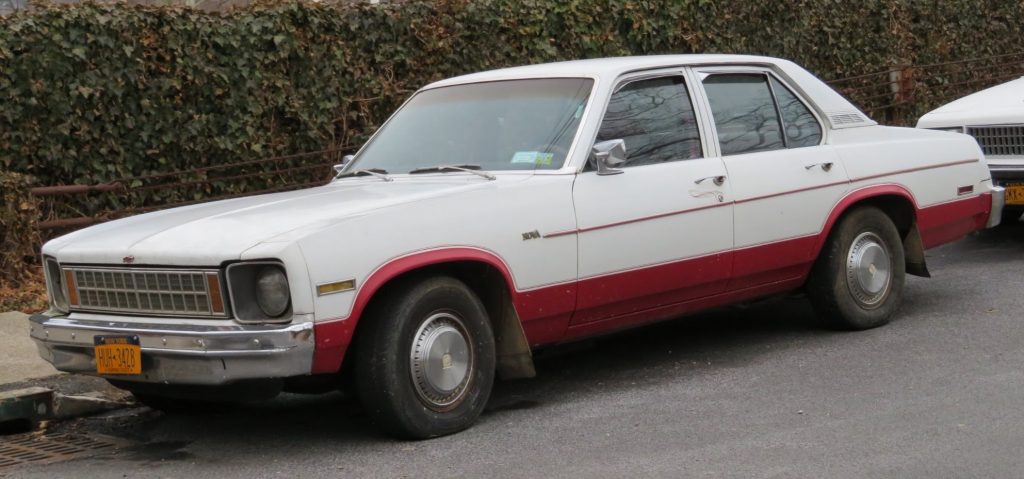
The original run of the Chevrolet Nova ended with the fourth generation from 1975–1979. By now, performance was completely absent from the Nova, as the most it could muster was a measly 165 horsepower from a 5.7 V8 with a quad-barrel carburetor. The SS only continued as an option package through 1976, after which the Nova Rally package replaced it until the generation’s end in 1979.
The car still ran on the GM X-platform and 111 inch wheelbase, and reverted back to a more boxy and less smooth look. The Luxury Nova (LN) package became the top luxury trim for the Nova, and added various luxury items to the interior. This switched to the Nova Concours from 1976–1977, and the Nova Custom from 1978–1979.
The Nova still managed decent sales until 1979, when things fell off a cliff and did not top 100,000 for the first time since 1967. Chevrolet decided not to continue the Nova in the early-‘80s, replacing it with the front-wheel drive Chevrolet Citation to begin the decade.
1975–1979 Chevrolet Nova Engines
| Model Year | Engine | Horsepower | Torque |
| 1975-1976 | 4.1L I6 (1bbl) | 105 horsepower | 185 lb-ft |
| 1975 | 4.3L V8 (2bbl) | 110 horsepower | 195 lb-ft |
| 1975 | 5.7L V8 (2bbl) | 145 horsepower | 250 lb-ft |
| 1975 | 5.7L V8 (4bbl) | 155 horsepower | 250 lb-ft |
| 1976 | 5.0L V8 (2bbl) | 140 horsepower | 245 lb-ft |
| 1976 | 5.7L V8 (4bbl) | 165 horsepower | 260 lb-ft |
| 1977-1978 | 4.1L I6 (1bbl) | 110 horsepower | 195 lb-ft |
| 1977 | 5.7L V8 (2bbl) | 145 horsepower | 245 lb-ft |
| 1977 | 5.7L V8 (4bbl) | 170 horsepower | 270 lb-ft |
| 1978-1979 | 4.1L I6 (1bbl) | 90 horsepower | 175 lb-ft |
| 1978 | 5.0L V8 (2bbl) | 135 horsepower | 240 lb-ft |
| 1978 | 5.0L V8 (2bbl) | 145 horsepower | 245 lb-ft |
| 1978 | 5.7L V8 (4bbl) | 160 horsepower | 260 lb-ft |
| 1979 | 4.1L I6 (1bbl) | 115 horsepower | 190 lb-ft |
| 1979 | 5.0L V8 (2bbl) | 130 horsepower | 245 lb-ft |
| 1979 | 5.7L V8 (4bbl) | 165 horsepower | 260 lb-ft |
1975–1979 Chevrolet Nova Production Numbers
| Model Year | Body Style | Production Total |
| 1975 | Nova (I6) | 138,879 |
| Nova (V8) | 134,103 | |
| Nova SS | 9,087 | |
| 1975 Total | 272,982 | |
| 1976 | Nova | 275,345 |
| Nova Concours | 60,683 | |
| 1976 Total | 336,028 | |
| 1977 | Nova | 291,909 |
| Nova Concours | 73,355 | |
| 1977 Total | 365,264 | |
| 1978 | Nova | 237,681 |
| Nova Custom | 50,428 | |
| 1978 Total | 288,109 | |
| 1979 | Nova | 82,502 |
| Nova Custom | 15,219 | |
| 1979 Total | 97,721 |
1985–1988 Chevrolet Nova & Nova Twin-Cam
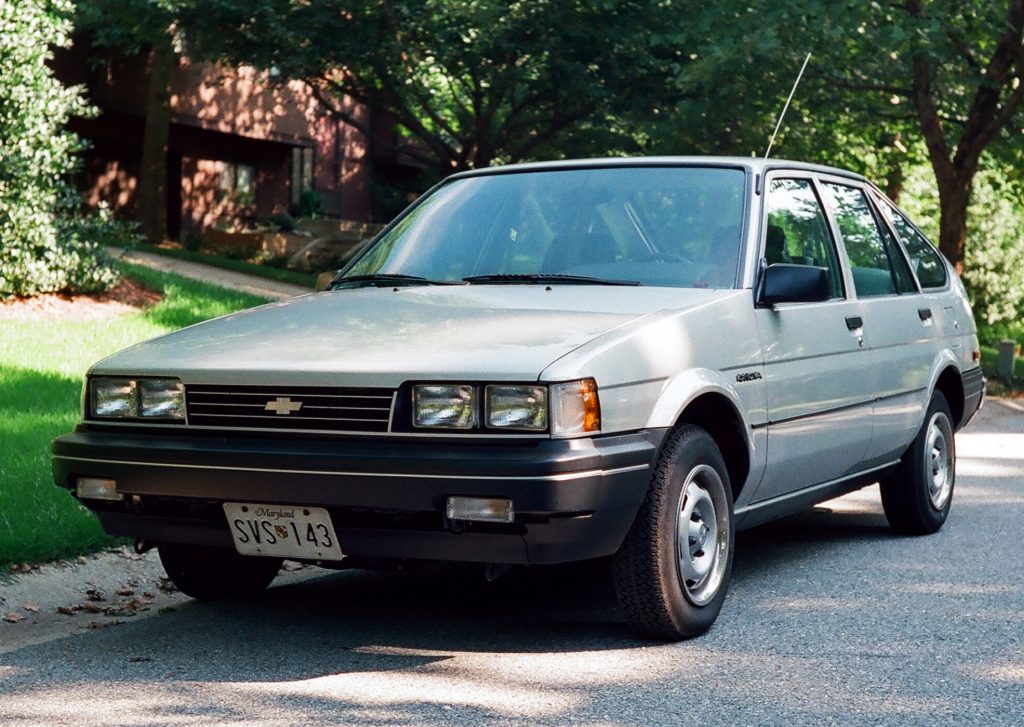
After a five year hiatus, Chevrolet brought back the Nova in 1985, but it was a very different looking package than before. It was basically an American market version of the subcompact Toyota Sprinter, which was itself just a variant of the Toyota Corolla. It rode on the Toyota AE82 platform, which is the same as the GM S-platform.
The hybrid Toyota-GM venture known as New United Motor Manufacturing Inc (NUMMI) built the fifth generation Chevrolet Nova, which was available as either a five-door liftback or a four-door notchback sedan. Chevrolet originally planned on launching the new Nova for the 1986 model year, but made a limited number for 1985. Through 1987, the only available engine was a carbureted 1.6 liter inline-four that made just 74 horsepower.
In 1988, GM released the Chevrolet Nova Twin-Cam. The Nova Twin-Cam was as high performance as the fifth generation got, with a 110 horsepower 1.6 liter inline-four. This was the high-revving 7,500-rpm, 16-valve version of the Toyota 4A-GE, with a dual-overhead camshaft (DOHC) valve train, variable induction system, and electronic fuel injection (EFI) instead of a carburetor. The Twin-Cam versions also got upgraded independent sport-suspension, sway bars, four-wheel disc brakes, and sticky 175/70HR13 Goodyear Eagle GT tires.
Considering the 1988 Nova only weighed about 2,350 pounds, the twin-cam engine actually made it decently exciting on the streets. The new Nova never sold nearly as well as the generations of old, and GM canceled it for 1989. They replaced it with the Geo Prizm, and the Nova namesake has never been revived.
1985–1988 Chevrolet Nova Engines
| Model Year | Engine | Horsepower | Torque |
| 1985-1988 | 1.6L I4 (2bbl) | 74 horsepower | 86 lb-ft |
| 1988 | 1.6L I4 (EFI) (Twin-Cam) | 110 horsepower | 98 lb-ft |
1985–1988 Chevrolet Nova Production Numbers
| Model Year | Body Style | Production Total |
| 1985 | Nova | 27,943 |
| 1986 | Nova Sedan | 124,961 |
| Nova Hatchback | 42,788 | |
| 1986 Total | 167,749 | |
| 1987 | Nova Sedan | 127,671 |
| Nova Hatchback | 26,244 | |
| 1987 Total | 153,915 | |
| 1988 | Nova Sedan | 87,263 |
| Nova Hatchback | 18,570 | |
| Nova Twin-Cam | 3,300 | |
| 1988 Total | 109,133 |
Chevrolet Nova FAQ
Most people consider the Chevy Nova SS from 1965–1971 to be a solid budget compact muscle car. In particular, the 1968–1970 Chevrolet Nova SS with the 350 and 396 V8 engines are some of the best budget muscle cars of all time.
The original run of the Chevy Nova lasted from 1962–1979, and again from 1985–1988. The high-spec Chevy Nova SS ran from 1963–1976, after which it was discontinued.
Yes. The Chevrolet Chevy II Nova lasted from 1962–1967, after which it just became the Chevrolet Nova.
The most sought out Nova is either the 1969 Yenko Nova 427 or the 1969 Nova 396 SS. These are two of the best looking and most powerful Chevrolet Novas ever built, and they are highly collectible today.

